Accounts Receivable (AR) Finance – Definition and Uses

The above Supply Chain Finance techniques have been defined by the Global Supply Chain Finance Forum (BAFT, EBA, FCI, ICC and ITFA)
Content
An Introduction to Accounts Receivable (AR) Finance – TFG 2024 Guide
Accounts receivable refers to any type of payment due to the company or person who has already supplied goods or services. The use and application of the term can be more complicated.
What is Accounts Receivable (AR)?
Accounts receivable refers to the outstanding invoices or money a company is owed after delivering goods or services. They represent a line of credit extended by a company, which typically have to be repaid within a short period of time, ranging from a few days, up to a year.
In this guide we’re going to look at five important steps companies should be aware of when utilising their accounts receivables.
For a small company, or even a singular entrepreneur, it is perfectly acceptable to keep a simple track of accounts receivable to be familiar with your pending cash flow. This will also allow you to keep track of when you should expect these accounts to be settled.
Further use can improve the overall financial health of the company by transforming accounts receivable into loan securities and collateral. This will allow the company to quickly increase liquidity based on funds that are yet to be received.
This utilization has some issues because mistakes in ascertaining the collectability of the invoices delivered may damage the rating of the company without other solutions.
Finally, accounts receivable may show managers, shareholders, and other stakeholders some indications about the financial health of the company and business, as well as the state of the market and clients. For investors, the resolution of accounts receivable is an important way for them to ascertain the security of their investment.
How can TFG help?
The TFG receivables finance team works with the key decision-makers at over 270 banks, funds and alternative lenders globally, assisting companies in accessing receivables finance facilities.
Our team are here to help you scale up to take advantage of both your domestic and international customers. We have product specialists based around the world, from automotive and vehicles, to media and data.
Often the financing solution that our clients may require can be complicated, and it’s our job is to help you find the appropriate receivables solutions for your business.
Read more about Trade Finance Global and our team.
Want to learn more about receivables finance?
You’ve come to the right place! Here in our accounts receivables hub, we’ve put together a library of content around receivables finance. Relax, and tuck into our latest editorial insights and spotlight interviews from the TFG, watch videos and tune in to our Trade Finance Talks podcast to hear what’s hot in the world of AR finance right below.
Latest insights on Accounts Receivable
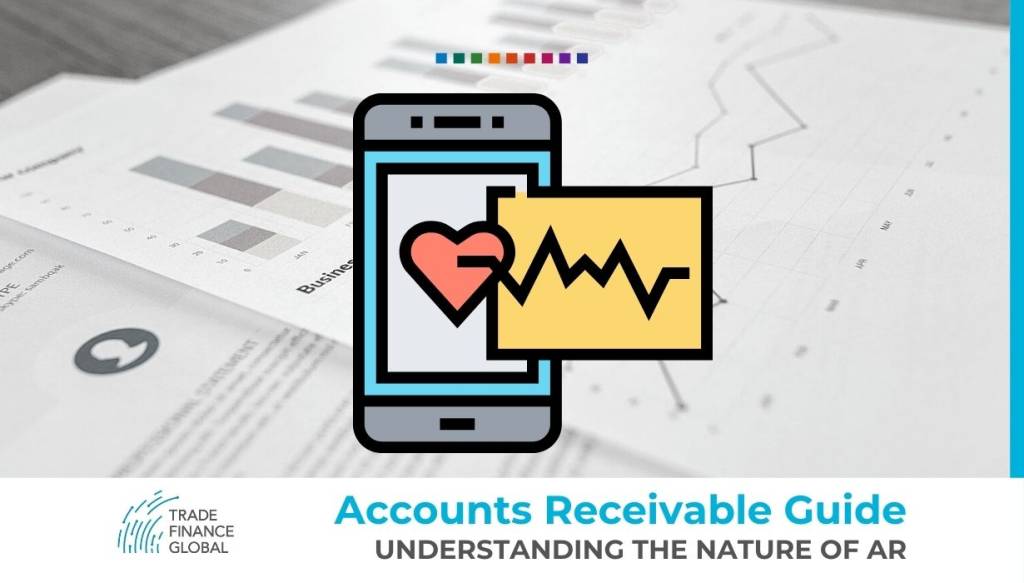
Understanding the nature of AR – definition
Accounts receivable are counted as current assets when it comes to balancing the sheet of the company with liabilities. As both these assets and the liabilities for costs made by the company are not immediate, there is a reason to include both when projecting the income and profit of the company.
But, when such a balance is submitted, an issue that rises with accounts receivable is that they may become uncollectible if the receiver of the invoice sent is not able to pay for the goods and services provided.
On such occasions, the accounts receivable are not removed from the list of assets but rather a new line is added for the list of liabilities that would cancel out the expenses made by providing the product.
As the expenses for the company may not include some of the items invoiced, it is possible for the liabilities created by uncollectible accounts to be lesser than the amount leveraged on the outstanding account.
On the other hand, if the accounts receivable are used as securities and have other liabilities connected to them they can include increased costs of non-payment. Primarily these costs may include time and interest paid by the company, but can also include any legal fees that should be noted as connected to the liability of the uncollected account receivable.
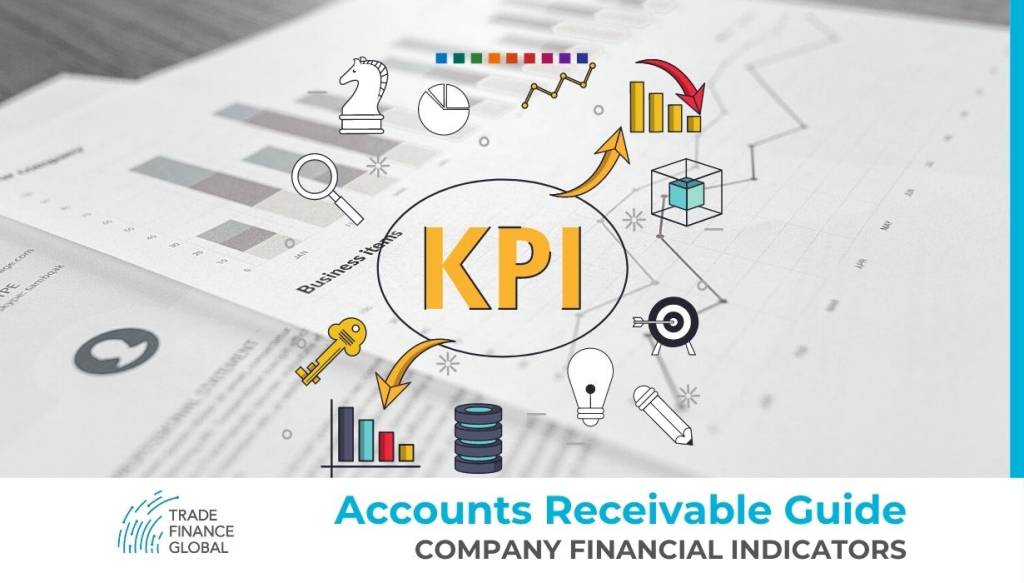
Company Financial Indicators: Six KPIs influenced by accounts receivable
Out of the 13 established key performance indicators for any company, accounts receivable have a direct impact on six and indirectly influences the overall health of the company. By determining how these assets are used and dealt with we may know if the company is experiencing growth or has any issues that should be addressed.
The six KPIs influenced by accounts receivable are:
- Working Capital
- Current Liquidity Ratio
- Financial Leverage
- Inventory Turnover
- Operational Cash Flow
- Seasonality
Determining the seasonality might not be directly impacted by the current accounts receivable, but the data concerning the number of such accounts made and the ratio of uncollectible accounts, as well as any long-term agreements that indicate growth is important for both company managers and other stakeholders.
Additionally, other KPI can also be affected by how the company is treating its accounts receivable. But, these are more in line with other operational qualities of the company than this asset directly.
1. Working Capital
As previously mentioned, while accounts receivable are assets they can’t be directly used for measuring the working capital and liquidity of the company. But, active-standby agreements with creditors and banks that use such assets as security and collateral can be used to quickly increase the liquidity of the company if necessary.
As such, an agreed portion of accounts receivable may be accounted as working capital in reference to such agreement with the creditors and indicate higher health of the company.
The downside of such a form of accounting is that miscalculating the portion of accounts that may be withdrawn or damaging the equity multiplier, may result in a domino effect of expenses that can overwhelm a company with insufficient financial health.
2. Current Ratio
Accounts receivable are measured as assets, meaning they directly increase the accounting liquidity ratio of the company. This follows the current standard that both assets and liabilities are calculated if referring to a single financial year or are in the range of one year from the date of calculation.
Such ratio should be followed by the notes on the dating of any such assets and liabilities, as well as the possible liquidation via collateral. Such additional information and instruments will allow all interested parties from knowing both the health of the company and the possible solutions for any liquidity issues.
3. Leverage
Accounts receivable are not considered to be equity but improve the equity multiplier by increasing the accounted assets and allowing for some of the liabilities to be financed from debt secured by accounts receivable.
For such a reason using such a system can both better portray the health of the company and any underlying issues and improve the value of accounts if such information is needed for creditors and stakeholders.
4. Inventory Turnover
For companies supplying goods, accounts received as assets are much more beneficial than standing inventory. This is why it may be preferable to issue diversified payment options even if they may be affecting the profit margin at the moment of sale.
Accounts receivable are valued at the face value of the account and don’t have a diminishing nominal value over time. For such a reason, they are a much better factor when securing a credit line or loan than any type of goods short of precious metals, art, or historic artifacts.
5. Operating Cash Flow
The application of accounts receivable on the cash flow of the company can be two-fold.
Primarily, there is the expected cash flow provided by the invoices paid at some point. If you know that there will be an influx of cash due to your accounts receivable over a certain period you can plan with that.
Additionally, borrowing against the accounts receivable means that you can ensure current operations without influencing equity or damaging your standing with the creditors.
Such an option might be troublesome if misused as uncollectible accounts can create a cash flow crunch and damage regular operations if either used excessively or if there is an unpredicted increase in uncollectible invoices.
6. Seasonality
Accounts receivable are one of the best ways to specify the seasonality of your company. Because you allow purchases to be made on credit or with other forms of delayed payment, you can get a much clearer picture of when your goods or services are in most demand.
This allows both managers and investors to know when the company might need an extended inventory or if the sales can be optimized to increase profits and lower expenses.
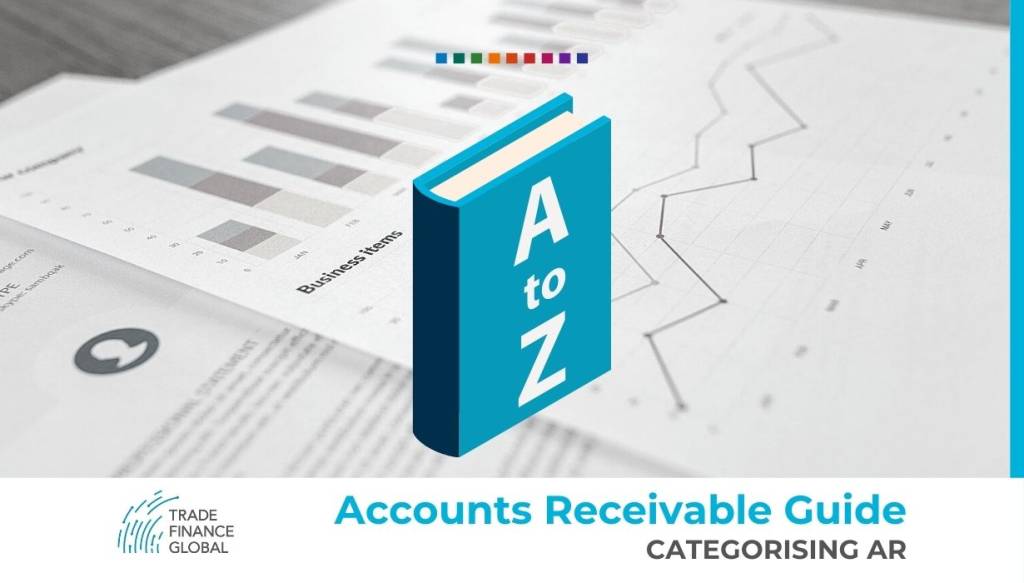
Categorising Accounts Receivable
Balancing Accounts Receivable over Accounts Payable
Accounts payable are diametric to accounts receivable and show expenses pending that need to be paid before a certain date. And, similar to how accounts receivable are portrayed on the assets side of the sheet, the accounts payable are shown as liabilities.
These two lists of accounts need to be balanced against each other per their due dates if any further action with the assets is to be taken. This may also portray an operational hazard where accounts payable are due before the incoming assets, which might create a reduction in company liquidity.
In that situation, a credit line needs to be opened against the accounts receivable to satiate any due debt and keep the company in good standing with healthy liquidity.
Additionally, diminished equity created between payable and receivable accounts indicates a risk from doubtful accounts and may need immediate action to ensure unrestricted operations in the future.
If seasonality shows a disparity between periods of greater expenditure and greater income, it is possible to optimise operations and prepare for the differences ahead of time, lowering costs in the long run.
Creating Informed Structures
Noting the details when it comes to accounts receivable is paramount for best utilising advanced features of the asset. Once detailed, it is possible to create informed structures with this data that will show even more than what a singular account might do.
The information that will be ingrained into the asset by default is the value of the asset. Contrary to other types of assets, accounts receivable do not diminish in nominal value. With simple accounting, you can expect to get exactly the amount stated on the account.
But, the value of the account receivable for the company is not the face value of the account. Depending on the available credit lines to the company, as well as the risk of doubtful accounts, the actual value can be lesser or greater than the one stated nominally.
Additionally, accounts with longer waiting periods are subject to inflation. This must be predicted if accounts payable are formed with shorter grace periods or if inventory needs to be purchased from liquidity.
Further, as mentioned before, the most important information when it comes to accounts receivable that need to be inputted are the dates when the reception is due. Structuring this data will allow for a clear view of sales and company growth as well as expected profits.
Client data and information might be situational depending on the type of the company but is always valuable for better targeting. Also, better customer relations might ensure the information about possible doubtful accounts.
Said risk is the final point in the structure and should be used to ascertain the amount of overall risk for the income predicted by the company. Such information will be crucial for taking long-term loans or borrowing against the accounts for liquidity.
Avoiding doubtful accounts as collateral
Any client or customer with a history of non-payment or tardiness should be listed as a doubtful account even if the risk is deemed acceptable.
While these accounts can be used as collateral in the same way as any other asset, it is not recommended for any company, regardless of the health, to do so.
Simplified, a company with good liquidity that wouldn’t be at risk from these accounts defaulting should not need to borrow against them and should use better means. And, those with bad liquidity that have expended other means are at risk from further harm if the asset is used in this way.
The only viable scenario where doubtful accounts may be used is for express liquidity, such as to finance an opportunity that is predicted to pay off before the doubtful accounts are due. But, the increased risk is substantial and should be avoided if possible.
Noting Final Payment Dates
Final payment dates are the last date before legal action against the holder of the account can be taken. Depending on the policy of the company and the local legislature, this period can be up to 90 days after the date stated for the holder of the account.
All of the dates, as well as former payments, should be noted and calculated against each other. This will provide valuable information about predicted liquidity, projected return on equity (ROE), as well as the general health of the company.
Both the date provided to the holder and the last legal date of the account should be noted. If the primary time frame is broken the account must be viewed as doubtful and treated as an asset under increased risk.
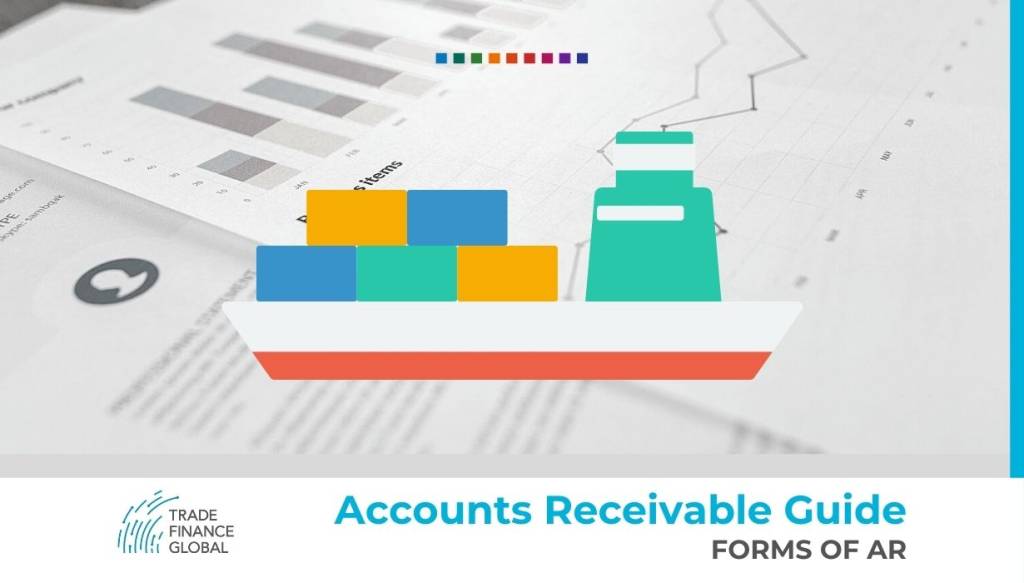
Forms of Accounts Receivable
Although all accounts receivable are similar when treated as company assets, they can come in different forms depending on the type of the company and the services provided.
Different forms will tend to have variations when it comes to the period of payment, legal guarantees for the payment, as well as the risk involved for the asset becoming a doubtful account.
There are two main reasons for such differentiation. Primarily, it is to allow creditors to determine the terms of lending money against the account. Those with lesser risk and shorter dates of payment will, generally, offer cheaper interest and less need for insurance.
Secondly, the type of accounts receivable will allow investors and stakeholders to better ascertain the projected income and thus the profit of the company.
A company with a faster turnaround and good optimisation will be able to show success after a shorter period as well as make projections with a high degree of certainty well in advance. All of this encourages investors to keep the stock in the company.
1. Outstanding Bills and Payments
This is the most common type of account receivable and is present with any business entity that accepts payment on credit. Not only are these payments small and come with a fairly small degree of risk, but they are also insured by the creditor of the account holder.
The diminished risk and high probability of payment make it very easy for the company to use the accounts receivable as direct assets, forming them into collateral or secured loans at a low cost if necessary.
As no additional overhead is necessary for the account, the cost of doing business through accounts receivable is comparable to direct payments from the position of the company and should be utilised as much as possible.
2. Credit Payments
The difference between outstanding bills and payments and direct credit payments is in the creditor. Namely, unlike payments that are most frequently credited by the bank, a credit payment can be credited by the company directly.
This type of payment is more costly because it is usually a larger sum and needs to be insured with a third party insurance provider. For such reasons, using direct credit payments as means of creating an account receivable usually includes some sort of interest or price increase.
When properly insured, the credit payment is as secure as an outstanding bill. But, such insurance requires increased overhead which might not be transferable to the end-user. That is why such account receivable is considered inferior to the former.
3. Periodic Invoices
Depending on the nature of the product or service, such an invoice might be the best type of asset for the company or a major risk factor when it comes to finances. Any type of core industry or service can treat such payments as generally secure in the long term.
But, if the invoices are for products or services that are not essential they will come with a high risk of doubtful accounts. Specifically, if there are no expenses connected with cancellations the periodic invoices should be treated as risky by default.
The major benefit of periodic invoices is that they can be structured as a singular asset with all of the signed agreements formed as a singular account receivable. As such, they can be used as collateral or sold as debt entirely if necessary.
4. Resolved Contractual Agreements
These are classic pending payments and are completely dependent on the type of contract signed by the account holder and the company. Accounts receivable will need to detail any type of time frame stated in such contract and include an ad hoc risk assessment.
But, if the fulfilment of the contract is accepted by the account holder this type of account receivable can be used for all of the same purposes as other types.
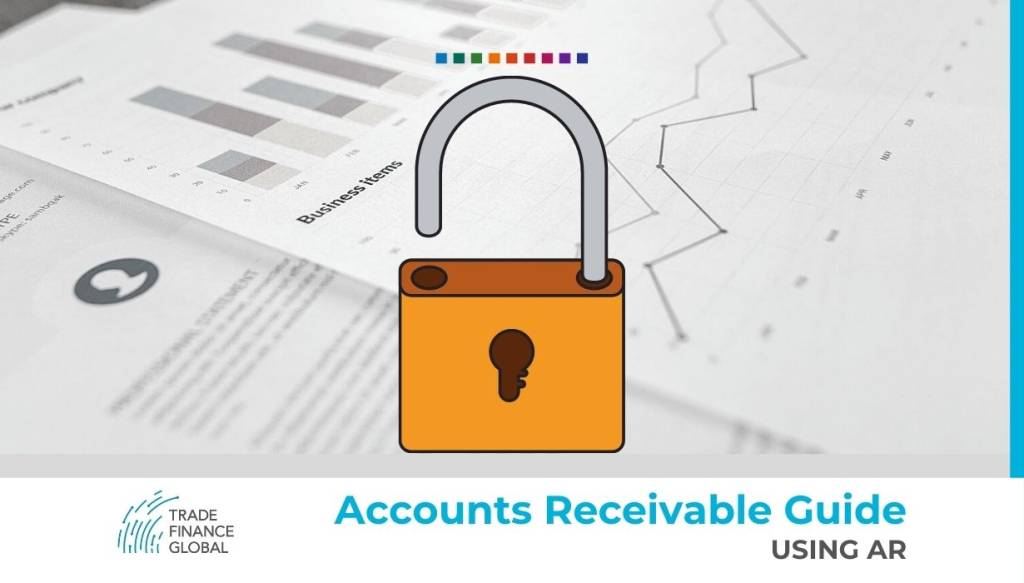
Different ways of using accounts receivables
Using Accounts Receivable as Assets
Once analysed, accounts receivable can be used as assets in the same way as would inventory or liquidated funds. But, since they are not realised they can’t be used as a tender to cover accounts payable that are due before the accounts receivable.
But, what is possible is using the assets as collateral for loans. As such loans are considered secured by assets, the cost and interest for such financial tools will be lesser than on a regular cash flow loan.
Additionally, optimal utilisation of such assets can improve the KPI parameters of the company. Not only would this further lower the cost of borrowing and increase the health of the company, but would also increase the trust of the shareholders and possible investors.
Using Accounts Receivable as Collateral
There are two ways to utilise accounts receivable as collateral with your bank or other types of credit line provider. Depending on the needs of the company both the simple balance and the detailed structure can be preferable.
For smaller companies that have fairly homogenous receivable accounts, it may be easier to balance all of the accounts as they are with nominal asset values and no further investigation. As such, they can be presented to the loan giver as collateral and security for any loan taken by the company.
The downside of this is that the risks and value of the asset will be determined by the loan giver and the uncertainty of the value due to doubtful loans may result in a lesser offer than it would be if the accounts are detailed. That might mean a higher interest rate or only a fraction of the value of the account received accepted as collateral.
Otherwise, it is possible to create a detailed structure of the accounts receivable and use them as such. Because such structures can be separated and used fractionally, they can be much more cost-effective for companies that want to optimize their business.
Utilising Cash Flow
Although accounts receivable are current assets, they are future cash flow. They can be used, at least in part, to match with accounts payable to reduce the stress of expenses on the liquidity of the company.
Due to such a possibility, it is beneficial for any company to allow customers or clients to become account holders of accounts receivable without any constrictions when it comes to liquidity or risk.
But, it is necessary not to rely on this method too much as doubtful accounts may form a cascade effect and damage the ability of the company to satisfy accounts payable.
Portioned Borrowing on Accounts Receivable
While possible to only form a conservative line when determining a portion of accounts receivable to be used as collateral for a loan, this aspect of the asset is also prone to optimisation.
Namely, if the accounts are structured into those with higher and lower risk, it is possible to leverage different sets of accounts to a varying degree.
Safe accounts receivable can be leveraged to a high degree, with 75% being comfortable for most small and medium businesses. Even with risk included, such liquidation should not bring an otherwise healthy company in jeopardy.
Inferior accounts receivable would need to be leveraged as a significantly lower ratio and should not pass 25% for small and medium-sized companies.
Finally, doubtful accounts should be avoided to be used as collateral but can be summed up and offered as a package to third party financial derivatives dealers. Such a solution might bring the company less liquidity, but without the risk of increased debt to equity ratio.
Using as Loan Security
High-quality accounts receivable, especially if confirmed repeatedly through seasonality, can be used without placing them directly as collateral to a loan giver or bank. Instead, they can be used as an indicator of the company’s ability to pay any debt and with a known time frame.
The risk of invoices becoming doubtful accounts is held by the company, meaning most banks and financial institutions will offer a better interest rate on the debt than with other uses of accounts receivable.
Although the overall amount of risk taken by the company is increased this way, the lower cost of borrowing can vastly compensate for such a decision if the accounts are properly structured and optimised.
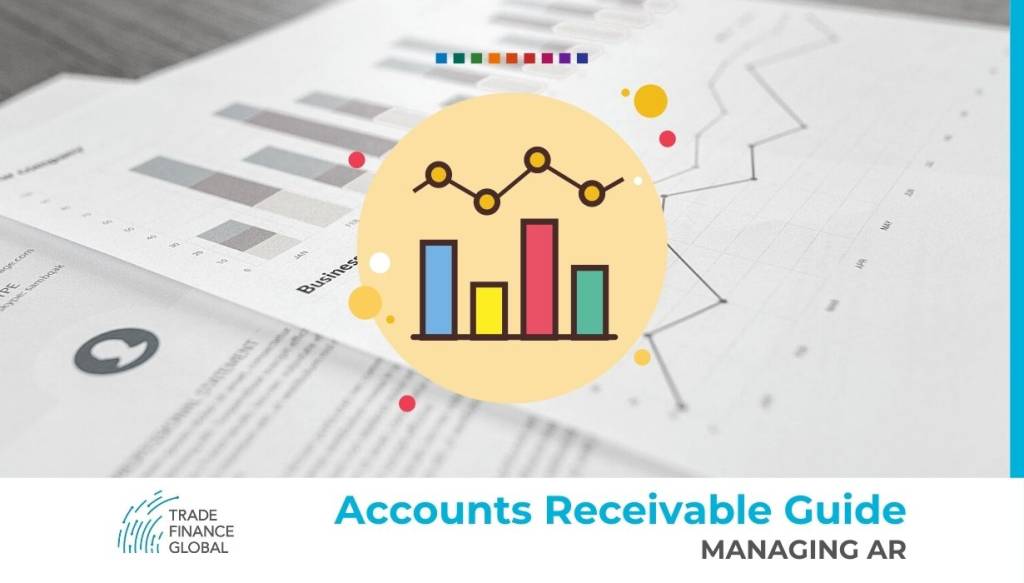
Managing Accounts Receivable used as Collateral or Security
Once accounts receivable are used as collateral or security, it is beneficial for the long-term financial stability of the company to actively manage how these accounts are handled and act as soon as possible to any changes to the quality or collectability of the accounts receivable.
Thankfully, such behaviour is scalable with the size of the company and the operational benefits formed by dutiful management outweigh the costs of such management by a significant margin.
Removing doubtful accounts
When using accounts receivable as loan security in particular, former accounts of good quality can deteriorate due to circumstances beyond the control of the company. This can also include previously high-quality accounts receivable becoming doubtful accounts.
In such situations, it is necessary to remove the doubtful accounts from the structure of accounts forming the security as soon as possible. Then these should be exchanged with new accounts receivable that will allow for the level of risk to be the same.
From an operational standpoint, it is easier to manage a higher debt to asset ratio when it comes to low-risk accounts receivable than to have any liabilities connected to doubtful accounts, as those may become uncollectible.
Listing as Liabilities
All accounts receivable that are given as collateral for the loan granted should be accounted for on the right as liabilities. This will ease the overview of the expenses and won’t place the account out of balance.
Similar to both accounts payable and other types of debt, these should be shown with detailed notes regarding the time granted for the loan.
With such an approach, it is certain that any bad projection won’t affect the overall account and won’t impact the accounts payable. This is essential for a good credit rating and thus the overall health of the company.
Notes and Descriptions
The notes used to generate detailed structures should be provided to the lender, as well as the ratio of the debt compared to the assets only including the used structure of accounts receivable.
By doing so, it is possible to get significantly more favourable terms when borrowing and directly improve the health of your company. Even if the accounts receivable are not high-quality, the adequate projection of risk shows the lender the ability of the company to manage these risks and allows for favourable conditions.
Total Accounts Receivable Balance
Finally, all accounts receivable, including those used as collateral that are shown on the liabilities side of the account, should be balanced against each other.
This should be done for each structure of accounts receivable separately with the final portion being doubtful accounts that should be, if possible, excluded from any type of utilisation when it comes to borrowing or collateral.
The final balance will show the projected equity of the company when it comes to accounts receivable and can be used as a data block when other accounts are being balanced as well.
Accounts Receivable in Solvency and Liquidity.
As accounts receivable may be used as nominal assets by the company and easily borrowed against a known and nominal value, they are a major factor when it comes to both solvency and liquidity of the company.
Solvency refers to the ability of the company to service long-term debts, costs, investments, and other financial commitments. As such costs usually have a longer execution period than any type of account receivable, it is adequate to calculate solvency with such accounts using their nominal value.
But, even in this case, any doubtful accounts should be removed from the calculation.
Liquidity is the ability of the company to meet short-term expenses, as well as to react quickly to market changes that require a financial reaction. Accounts receivable in this case may be due after such commitments are due and can’t be used with their nominal value.
In this case, the liquidity needs to be calculated in accordance with the company’s lender to ascertain the market value of the accounts receivable, which can then be used as collateral or loan security.
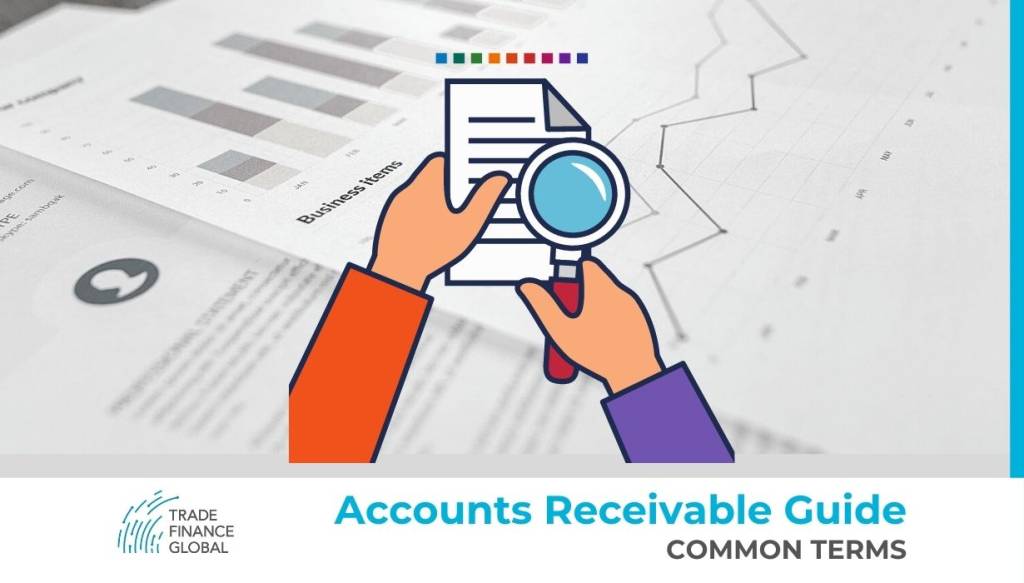
Common terms in accounts receivables finance
Solvency Ratio
The solvency ratio of the company that has significant assets in accounts receivable is relatively easy to calculate by using the nominal value of these accounts, minus the doubtful accounts, and adding them to other assets held by the company.
Once that is complete, the full assets should be measured against the total debt of the company.
By using the D/E calculation (debt divided by equity) we can get a clear picture if the company is solvent.
Depending on the turnover rate of the company an adequate ratio might be different, but generally, those companies with a ratio lower than 1 are considered solvent as they own more than their total debt.
Conservatively, a company should have at least a solvency ratio under 0.75 to consider healthy growth.
Liquidity Ratio
Although liquidity can be measured inside any time frame, the accepted method is using the current fiscal year. Liquidity is the collection of current assets reduced for the number of current liabilities.
When it comes to accounts receivable, it is necessary to match these accounts with the liability side when it comes to the period in which liabilities need to be paid off. This includes both the current expenses and any debt used as collateral via the accounts receivable.
If such balancing is impossible, the company will need to borrow against accounts receivable to meet the time constraints of the accounts payable.
Current and Future Liquidity
On the opposite side of the borrowing spectrum, current accounts receivable may be used for predicted future liabilities that can’t yet be considered as accounts payable.
For companies with optimised accounting and determined seasonality, there is a significant benefit of withholding spending to ensure future liquidity. Especially for small and medium businesses, this type of financial management can be significantly cheaper than what any lender might offer.
How to present Accounts Receivable
When communicating with lenders, management, shareholders, investors, or any other type of stakeholder in the company it is best to have a detailed and clearly defined structure when it comes to all aspects of the company, including accounts receivable.
Although a simple cumulative calculation of accounts receivable does indicate the income and projected cash flow of the company and can be presented in this way to a degree, the accounts must be detailed and structured as to present them in the best way.
Even if such details might indicate an issue with collectability or seasonality, the fact that it is known alone is beneficial in the eyes of the stakeholders and management.
Presenting as assets
The most common way of presenting accounts receivable is as assets, which they are. Having a detailed account and structure will clearly show both the current income and cash flow of the company as well as the predicted growth and seasonality of the sales and contracts.
While such a presentation isn’t as detailed, it doesn’t portray the complete value of the company, especially when presented with other assets.
Presenting as indicators
For stakeholders, a much more important type of presentation when it comes to accounts receivable is for the six types of KPI that are directly affected by them.
As indicators, accounts receivable are not only presented as singular structures but concerning the liabilities and opportunities that are directly connected with them. This way they can not only show the current health of the company and the projected growth in detail but can also portray the level of optimisation provided by the management and accounting.
Reducing Uncollectible Payment Ratio
For any company, regardless of the industry, that accepts accounts receivable it is important to constantly reduce the percentage of uncollectible accounts in each fiscal year. Each uncollectible account is portrayed as a visible loss and a high percentage is an indicator of mismanagement.
There are four ways to repeatedly reduce the number of uncollectible accounts.
- Primarily, it may be necessary to run a credit check on all clients and customers wanting to make a purchase on an account receivable at a later date. This check may need to include a lot of factors and it will depend on the industry how much risk is viable to take on.
- Further, the company can focus on past performance to ascertain the probability of an account becoming doubtful or uncollectible. For those in good standing with the company directly it may not be necessary to perform a credit check.
- Additionally, it is prudent to agree on a due-date with the account holder that is well before the date when the account becomes officially uncollected. By setting up regular reminders you may increase the sense of urgency to pay with the customer without affecting your liquidity.
- Finally, it is possible to set up a discount for any type of account receivable once it becomes doubtful. By notifying the holder and offering a reduction in price for timely payment it might be possible to salvage some of the account receivable from becoming uncollectible.
Conclusion
Although accounts receivable are simple, signifying only that there is some money owed to the company for the services already rendered or the goods provided, the full use of the account can be a lot more complex.
Additionally, these accounts mean different things to different actors inside the market or the company.
For accountants, they need to be detailed and balanced correctly against collateral made against them. This is also helpful to the managers that can predict future cash flow and base their decisions on it.
Finally, for investors and shareholders, it is of utmost importance to include accounts receivable when it comes to the key performance indicators of the company to know if the overall trajectory makes for an adequate investment.
Get started – talk to our team
If you have an invoice finance enquiry, please use the contact form.
Otherwise, you can reach us on the email addresses below.
Trade Finance Global
- 201 Haverstock Hill
- Second Floor
- London
- NW3 4QG
Telephone: +44 (0)203 865 3705
Our trade finance partners
- Supply Chain and Payables Finance Resources
- All Payables Finance Topics
- Podcasts
- Videos
- Conferences




















